
Fantasmagoria
Joined 13th Feb, 2012 ·
Offline
Join our SubscribeStar to remove these adverts!
Also LikedSimilarAuthor
- An alternate universe anthology, where one seemingly-insignificant change altered everything...Dr. Rarity · 20k words · 42 4 · 2.5k views
- A Hoof-ful of Dust · 3.4k words · 98 0 · 2.3k viewsA world-consuming being threatens Equestria. Can Twilight find it within herself to face it?
- Retsamoreh · 224k words · 248 15 · 5.5k viewsA space military captain, who believes that Equestria resides on the legendary, long-lost planet of Earth, attempts to save Twilight and her friends from an incoming invasion that threatens both Equestria and the galaxy while keeping them all sane.
- StreakTheFox · 7.4k words · 46 8 · 1.9k views
- Fon Shaolin · 1.3k words · 145 11 · 3.5k viewsA confession a lifetime in the making.
- ABagOVicodin · 4.3k words · 108 2 · 2.8k viewsPrincess Luna talks to Twilight one day before Magical Mystery Cure.
- Expansion on Crescent Pulsar's fic Pamphile: Twilight Sparkle defeats Nightmare Moon alone, becoming the Alicorn of Harmony. With growing outlooks, she will endevour to be a true Pamphile, a Friend to All, even if she has much to learn still.AkumaKami64 · 21k words · 398 7 · 11k views
- The Psychopath · 20k words · 169 7 · 2.9k viewsDerry is now confronted with something dangerous that could shatter both his mind and his soul.
- Wolfram Alpha · 62k words · 323 21 · 5.6k views"Six will rise, but one will fall. Evil returns to rule them all. If his actions do not desist, then this land shall cease to exist." - Unknown
- chillbook1 · 8.4k words · 77 2 · 1.5k viewsCanterlot Castle goes missing, and it's up to the princesses to find it!
- Hitch Trailblazer acquires a seemingly worthless artifact from Alphabittle. He soon discovers this artifact is far from worthless though, as it transports him back in time to when alicorns ruled Equestria.cerealkiller78 · 5k words · 74 2 · 2.4k views
- Twilight's first experiment with age magic gets more than a little complicated.Barrobroadcaster · 7.7k words · 83 3 · 2.8k views
Join our SubscribeStar to remove these adverts!
Join our SubscribeStar to remove these adverts!
Stats
Page generated in 0.361 seconds
Total duration
612 users online
1,087,028 hits today, 2,454,720 yesterday
FIMFiction
My Little Pony: Friendship is Magic Fanfiction
Designed and coded by knighty & Xaquseg - © 2011-2024
Follow & Support Us
![]() Support us
Support us
SubStar
Chat!
Discord
Follow us
Twitter
MLP: Friendship is Magic® - © 2024 Hasbro Inc.®
Fimfiction is in no way affiliated with or endorsed by Hasbro Inc.®


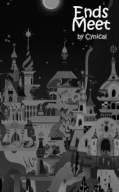


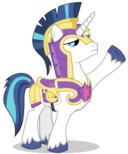
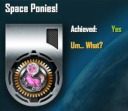
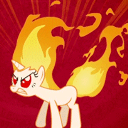



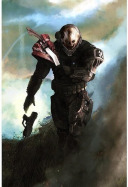


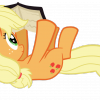
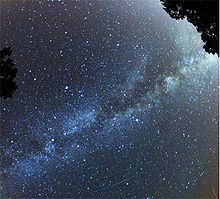
I eagerly await the continuation of this tale
Tracked, because this is going places.
470078
OH THE IRONY
Visiting different worlds? This fic has ENDLESS possibilities.
Tracked.
470284
Well, we'll see how many of those possibilites I can incorporate, but thanks.
This is gonna be good.
When i read the first half, and then saw the Twilight tag, i thought of the Patrick Starfish meme where they "Take all of this power. And cram it into Twilight."
Unless Luna has a way to scout the planet before hoof things could end badly.
Don't tell Rarity about this planet: http://www.cracked.com/article_19479_the-6-most-mind-blowing-things-ever-discovered-in-space.html
Huzzah! Another chapter. Nice work.
I like it, tracking.
One (Freudian?) mistake - it's probably Luna's immortality that lets her survive without air, not her immorality.
I got a chuckle from this.
She finally looked over to Luna, and saw that she wore no protective spell around herself. This confused Twilight momentarily, before she chalked it up to the Princess’s immorality.
I think you meant Immortality. Easy mistake.
Like the story. Keep it up.
532155
Okay, I finally managed to stop laughing. Thanks for pointing that out, man.
This is getting better. But if you want to maximize nerdiness in this story, you should use metric. It's completely optional, of course. To me, it just sounds more scientific that way.
God damn I love sciencefics.
I like where this is going.
This is getting good, very fast. And, I really appreciate that you are making this as realistic as possible. Case in point:
Epic. Just epic.
Twilight and Luna, science buddies! I approve heartily.
One minor nitpick. It is extremely difficult to see planets in other solar systems (to the point where we need several satellites). Nothing that will cause any Suspension of Disbelief problems or anything like that though. It's also nice to see the story's updated too.
1283611
I was kind of torn between making the situation more complicated or keeping the narrative flowing. I eventually decided that the formidable size of one of her telescopes that I remember from one episode might allow her that level of resolution, and that I should follow the KISS principle (Keep It Simple, Stupid).
sounds really interesting, fav first before reading..
(Keep working)
They can see the lights of their cities from orbit well enough to identify a small town like Ponyville?
1283714
I probably didn't define that very explicitly, but they were in a very low orbit for that scene, about 250 miles up.
static.fjcdn.com/pictures/MLP+WALLPAPER.+Cool+Discord+wallpaper_16a9c2_3354767.jpg
Moar?
Trackin' like I'm cracka-lackin' cuz I been snackin' on these Saltines and now I can't whistle :c
1283622 Twilight does have some very nice telescopes... but none of them would be able to see planets from even as few as a dozen light years away, of course.
You'd need at the least something on the magnitude of a VLA (very large array)... or an alicorn who can use a ridiculously powerful farsight spell, I suppose. If I were you, I'd go with the "A wizard did it!" logic for the fact that Twilight and Luna actually know about the presence of planets around any nearby stars. But that's just me.
1284066
Maybe Twilight's telescope is enchanted to draw in more photons than its diameter would normally allow. Sort of like a magical funnel, centered on the lense, that bends light incoming from a certain direction onto the focal point, effectively making the telescope bigger than it physically is.
Hell, I can see Twilight doing that just for the challenge.
smosh.com/sites/default/files/bloguploads/ancient-aliens-th_0.jpg
*Cackles* Nuff said.
Also, addendum: Whilst the speed of light remains constant except when warped by intense gravitational forces, there are ways around it. Einstein-Rosenbridges for example. Also known as Wormholes. And given that teleportation works similar to this, then would it not be possible to create a temporary wormhole between one point and another in the MLP verse, allowing Luna and Twilight to see through whilst it retained impermeability, thus ensuring no air was sucked in/ out?
Whilst the power requirements for such a light-teleportation spell would be obscene, it would take far less energy than actually teleporting there. And were it oriented above the system allowing the viewer to see the planets from above, then said calculations could be made to re-target the light-teleportation spell to get a better understanding.
SCIENCE!
Remember kids: Why word hard when you can cheat?
Also, Deamon: No, you will not make the telescope a Tardis.
Cheers
GM
1283622
Without invoking magic, you can't do any useful observations of extrasolar planets from the surface no matter how good your telescope is. At just 10 light years the resolution limit imposed by the atmosphere is on the order of 20AU, or about the orbit of Saturn.
The good news is that, on Equestria, you can easily invoke magic. Perhaps a common enchantment on astronomical telescopes is a far sight spell fixed to 'skip over' most of the atmosphere.
I'm liking the story so far and I like where it's going.
One teeny tiny little grammar thing, though; you're mixing up its and it's. 'Its' is the possessive pronoun, and 'it's' is the contraction for 'it is'.
This is an interesting start and the fiction is complete new.
So Luna in this fiction can only move the moon but can't move and create stars and constellations.
I love this story but I have a suggestion.
It is interesting to have real science in the magical fiction (such as speed of light or something else)
Don't put too much real science in this fiction or this will make you some trouble writing.
That is a magical world (university) and sometimes magic can solve physical problems.
Or you can use Alicorn's (Luna's) IMBA power to solve some problem (but according to your own rule in this ficiton).
Anyway, fav and love. Your fiction has great potential.




5 Celestia for your nice begining!
1283585
And that little passage is when you know this fic is serious, glorious fucking business.
Interesting story. Please, keep on working on it.
1284424
I like the way you think
I'll work that into the next chapter.
1285139
One of my favorite parts of the story collection "Gold" by Isaac Asimov is where he effectively debunks time travel in reality by virtue of there being no means to account for movement of stellar bodies in most of the methods we've brainstormed so far, but then turns around to say that that should in no way preclude people from using it in their stories because the plots are just too much fun.
Yes, thy Princess desireth thou to help us finish crafting the calculations for an interstellar mass-transit system that we have dubbed the "Stargate"... Twilight? Twilight, are you alright?
1285451

Beautiful characterisation and, I think, a very in-character set of responses from Twilight. You see, she would be the one who dreams the impossible dream and imagines what lies on the furthest frontiers.
Okay, so they're getting ready but Twilight figures the Power Gem will give them maybe three two-way flights at the maximum. That means they have to identify the right target and do it first time if this is going to be worth it.
How to locate the nearest stars? The parallax effect. The nearest stars would move perceptably against the background based on charts made six months apart because the planet Equis would have moved half-way around its sun (a base-line of probably around 180-190 million miles or 2AU). Although this is still only a tiny difference for an object as distant as even the most nearby star, it still would enable someone sufficiently smart (*coughTwilightcough*) to calculate the distance to the object based on a fairly elementary trigonometric equation.
SAFETY NOTE: Bright =/= nearby. Brightness is a function of the power of the star, not its proximity. Some of the brightest stars in Earth's sky are giant-class stars several thousand light years distant. Indeed, Sun-class stars are invisible to the naked eye at distances greater than just 30 light years. An observer on a hypothetical planet orbiting the A-Centauri triple star would not even note the Sun as a particularly bright star in the sky.
So, once you've found a nearby star, I recommend one inside the 'red line' of 25 light years (8 parsecs) that you would be able to fly to at sublight speeds in less than one human lifespan, you need a star that has a habitable planet. Most astronomers would recommend you don't try a close binary star; the conflicting gravity of the two suns would prevent larger planetary bodies forming and rule out stable orbits. Similarly, the very smallest and most common stars - red dwarfs - are so small that any planets orbiting them would have to be unthinkably close to the primary to get enough energy to be habitable and, at that distance, would likely have 'years' measured in just days and would be tidally locked with one face eternally turned to the sun and the other in eternal night; unihabitable. The ideal stars are of spectral class K (orange), G (yellow) and A (white). Any habitable planetary body in such systems would be in approximately the same zone as Equis around its primary - about 70-150 million miles orbital radius.
You're right about the light speed effect (we can only see the object as it was when the light left it to travel to us). However, there is also an issue of real motion. All stars move around the galactic centre in orbits like planets around their stars. However, those orbits are not uniform in speed or even in inclination. The Sun, for example, is in an orbit that extends about 20 degrees above and below the galactic disc. They also have an intrinsic motion away from the nebulae where they were born that is aside from their galactic orbits. So, yes, a lot more observation is needed to complete the astronavigation problem
Whew! Sorry about all the tech stuff there! You can tell that I'm as much a space geek as Twilight ever was! You can see that this story has caught my interest. I'll be watching for more updates!
You can see that this story has caught my interest. I'll be watching for more updates!
1285598
Nice to see someone who's enthusiasm for this subject matches my own! One of my concerns was that if I applied everything I knew to this, it would read like a Scientific American article and probably not be that enjoyable. Part of why this took me so long was trying to pare down some of the detail I was putting into areas that weren't really relative to the storyline.
I'm glad to see a story that panders to the astro-heads like me! I'm thoroughly enjoying all the scientific and technical details you're working into the story, and I look forward to more of this TRUE sci-fi tale.
BTW: I am such a sucker for hard sci-fi, where we're exploring concepts, not seeing how many model spaceships we can blow up in a ten minute span. It's why I like movies like 2001, The Thirteenth Floor, Bicentennial Man, and books like Ringworld, Rendezvous with Rama, and the collected works of Asimov: they aren't afraid to explore the great question, "What if?" as well as all the necessary implications of asking such a question.
What if ponies used their magic to leave their world and explore other worlds, maybe for colonization? What if once they got there they brought along several unicorns who pooled their magic in order to colonize the galaxy, building it up over a couple hundred years until sufficient power was stored to make a FTL jump to other star systems? The possibilities are truly exciting, and I hope you keep it up. Like I said, true sci-fi excites me to no end, and I am just chomping at the bits to see more of this story!
Also, are you going to sneak in some pop-culture sci-fi references in there sometime? Much as I love hard science fiction, those still tickle my sense for adventure.
1286185
The Rama series has always been one of my favorites, and another good author to look up if you haven't already read his work is Robert A. Heinlein, who is my personal favorite of "The Big Three".
1286210 I love Heinlein! And I will never forgive the guys who made Starship Troopers into a movie about blasting bugs in outer space. The novel was so much more than that, but they felt the need to turn it into a summer blockbuster.
Have you read The Forever War? Much comparison has been made between it and Starship Troopers, but it's more about the implications of fighting an interstellar war when you still have to play by Einstein's rules. And I loved the ending.
(checks Wikipedia) EDIT: Apparently it's been too long since I read it, as I forgot about the Vietnam War analogy angle.
Plz know that if humans involved this story will be redundant.
1286320
I'm well aware of that, and you needn't worry. There won't be any human involvement in this.
All of the hard science in the story AND the comments makes me feel like an uneducated plebeian... Kinda wishing I had taken Physics so I could have a better grasp of the finer points here. I'm also guessing that some of this is university-level astronomy?
In the glorious name of astronomy, please keep writing this story. I love all the scientific details you're putting into this.
1286260
I read and loved Forever War, as well as Forever Peace. I would also suggest Marsbound and Starbound, his two most recent novels.
1287607Hmm, I haven't read any of the sequels. I seldom read sequels anyway, though. I'll check them out, though.
1286611Actually, very little of it is past the high school level, or at worst junior college. You can probably pick up any basic astronomy book from the library and it would give you the basics of things like orbital mechanics, time dilation, etc.
1285598 Pardon me, but didn't they recently discover a terrestrial planet in a binary star system? It made headlines, something about "discovering a real-life Tatooine".
1285139
Indeed.
Plus, nice characterization of Luna & Twilight on how they, metaphorically, look up at the sky and ask, "Gee, I wonder what's out there?" Makes them a little more, dare I say, human-like.
Also, why do I get the feeling that, due to the fact that they only have enough juice for a few "jumps," that one of them may get left behind on an alien planet? Or some other such dilemma?
Know what? F*k it.
Favorited. Thumb'd up. Tracking. The whole nine yards.